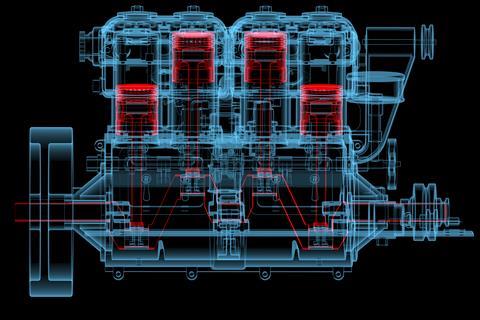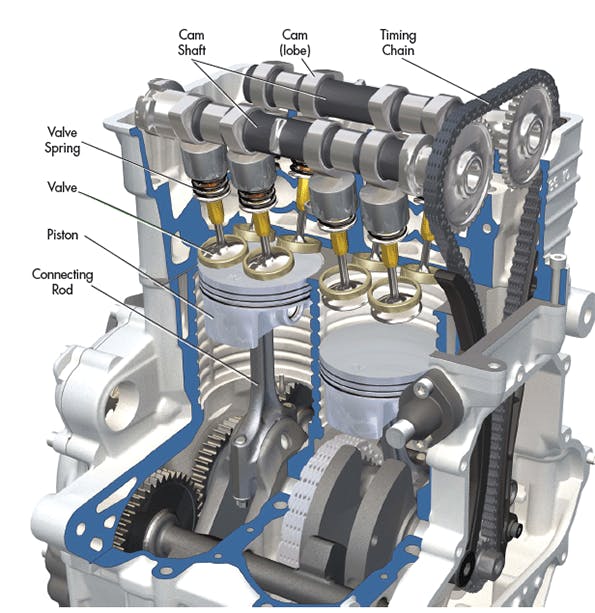Shop Engines for Africa and Even More at Our Substantial Car Components Store
Shop Engines for Africa and Even More at Our Substantial Car Components Store
Blog Article
The Pursuit for Ultimate Driving Power: Checking Out the Pinnacle of Engine Efficiency and Technological Advancements in the Automotive Market
In the world of auto design, the pursuit of optimum driving power has been a ruthless mission that has unfolded through the evolution of engine design and the assimilation of cutting-edge innovations. From the thorough workmanship of combustion engines to the fast advancements in electrical propulsion systems, the automotive industry stands at the cusp of a brand-new age defined by unprecedented performance capabilities. As designers and researchers dig much deeper right into the realms of computational liquid dynamics and explore ingenious fuel technologies, the horizon of possibilities expands exponentially. Remain tuned as we decipher the detailed tapestry of technical innovations that are shaping the future of automobile power and efficiency.
Development of Engine Layout

In addition, the combination of turbocharging and supercharging modern technologies has transformed engine style by improving power without significantly boosting engine size. These forced induction systems press the consumption air, permitting more fuel to be combusted, consequently producing greater power outcome from a smaller sized engine. This improvement has actually been especially essential in improving the performance of smaller sized displacement engines while keeping fuel effectiveness criteria.

Performance-Enhancing Gas Technologies
The implementation of innovative gas technologies has significantly contributed to boosting engine efficiency in modern lorries. Biofuels, obtained from eco-friendly sources like sugarcane, algae, or corn, deal reduced emissions and boosted engine effectiveness. Additionally, fuel ingredients and detergents are being created to tidy engine components, optimize burning, and decrease friction, thereby improving overall car performance.
Developments in Electric Propulsion
Significant strides in electric propulsion technology have changed the automotive industry, leading the way for a new age of reliable and lasting transportation. Electric automobiles (EVs) are acquiring appeal as a result of their ecological benefits and developments in battery modern technology, allowing longer driving ranges and shorter charging times. Suppliers are spending greatly in r & d to improve the efficiency of electric propulsion systems, focusing on increasing power outcome, boosting power efficiency, and decreasing overall weight.
One significant breakthrough in electric propulsion is the development of advanced electrical motors that provide greater torque and power density, leading to improved velocity and general driving efficiency. Furthermore, regenerative stopping systems have been improved to catch and save energy throughout deceleration, more enhancing the performance of EVs.
Moreover, the assimilation of smart modern technologies, such as expert system and anticipating analytics, is enhancing the management of electric propulsion systems, guaranteeing optimal performance under different driving problems. These developments in explanation electric propulsion are reshaping the auto landscape, driving the sector in the direction of a much more lasting and amazed future.
Impact of Computational Fluid Characteristics
With improvements in electrical propulsion pushing the limits of auto innovation, the integration of Computational Liquid Dynamics is playing a crucial duty in maximizing wind resistant efficiency and improving overall effectiveness in automobile layout. Computational Fluid Characteristics (CFD) involves making use of computer simulations to assess the circulation of air around a car, making it possible for engineers to forecast just how layout modifications will affect the rules of aerodynamics without the requirement for expensive physical prototypes. By accurately modeling air movement patterns, CFD enables the improvement of lorry shapes to decrease drag, boost air conditioning, and enhance security.
CFD enables designers to enhance air movement around components such as radiators, engine bays, and wheel wells, contributing to enhanced efficiency and total driving experience. In conclusion, the integration of Computational Liquid Dynamics stands for a considerable step onward in the quest for best driving power and performance in the automobile market.
Future Fads in Engine Advancement
In the vibrant landscape of auto design, cutting-edge advancements are forming the future trajectory of engine advancement. The future of engine design is noted by a strong emphasis on sustainability, performance, and efficiency. Makers are significantly concentrating on developing engines that not just provide high power outcomes yet likewise prioritize environmental duty by reducing exhausts and improving fuel effectiveness.
One prominent pattern in engine innovation is the increase of electrification. Crossbreed and electric powertrains are acquiring grip as practical alternatives to typical burning engines. These technologies use the possibility for significant decreases in carbon exhausts and increased energy performance, aligning with global initiatives to battle environment change.
Moreover, improvements in materials scientific research and production techniques are allowing the production of lighter and extra durable engine components. This shift in the direction of light-weight products such as carbon fiber and light weight aluminum alloys adds to improved performance and fuel economic situation.
Verdict
Finally, the pursuit of utmost driving power in the auto sector continues to drive developments in engine style, gas modern technologies, electric propulsion, and computational fluid characteristics. The evolution of these modern technologies is forming the future of engine advancement, leading the way for much more reliable and effective automobiles (engines for africa). As the sector remains to press the limits of what is possible, we like it can expect to see a lot more revolutionary advancements in the pursuit for peak efficiency
One of the key landmarks in engine layout evolution is the shift from traditional carbureted engines to modern visit this site right here fuel-injected systems. By exactly metering the fuel shipment to each cylinder, fuel-injected engines optimize combustion, resulting in much better performance and reduced environmental effect.
In addition, the integration of turbocharging and turbo charging innovations has revolutionized engine style by increasing power without considerably increasing engine size (engines for africa).The execution of sophisticated gas modern technologies has significantly added to enhancing engine performance in modern lorries. Additionally, gas additives and cleaning agents are being created to tidy engine parts, optimize combustion, and lower rubbing, consequently enhancing total vehicle efficiency
Report this page